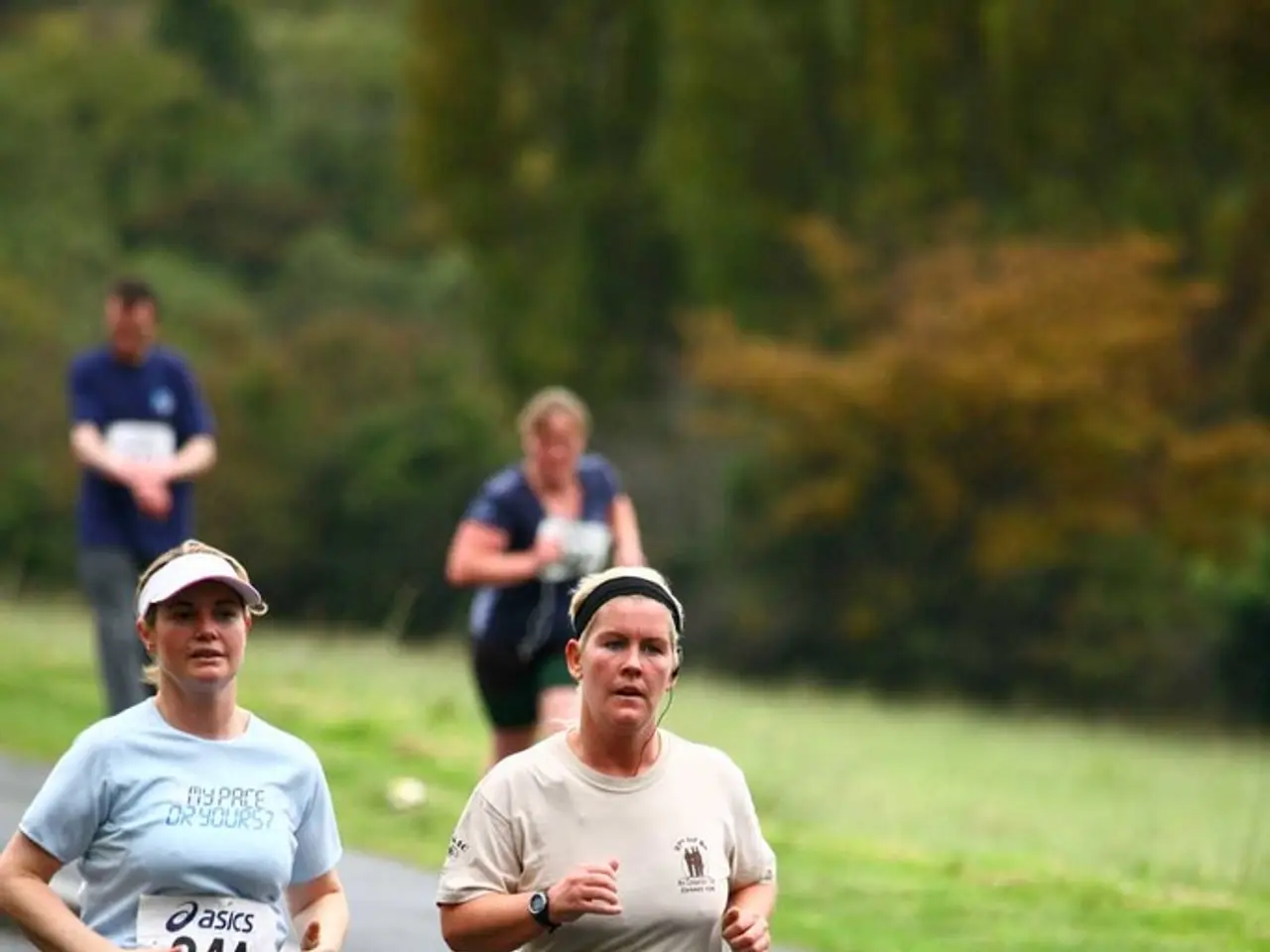Mile completion times by age and gender
### Optimising Your Mile Time: A Guide for Runners
Running a mile in the best possible time is a goal many athletes strive for. While factors such as age and gender play a role, there are several strategies to help improve your mile time effectively.
#### Factors Influencing Mile Time
Age and Gender: Young adult runners generally demonstrate faster mile times. Men, due to physiological differences like greater muscle mass and fast-twitch muscle density, tend to run faster than women [1][5].
Fitness Level: This is the most controllable factor. A higher fitness level enhances muscle strength, power, coordination, and endurance, leading to faster mile times [1][3][5].
Environmental Conditions: The terrain, altitude, and weather significantly impact pace. Running uphill or at high altitude slows pace, while flat terrain and sea level aid faster times. Extreme temperatures, humidity, and air pollution also impair performance and increase finish times [1][2][3].
Effort and Training Type: Whether running a mile as a race or an easy run affects pace. Consistent running practice and effort level build the base fitness needed for improvement [3].
#### How to Improve Your Mile Time
1. **Increase Fitness Level through Consistent Running:** Regular running helps your body adapt, improving endurance and speed over time [3].
2. **Speed Workouts and Interval Training:** Interval training, which mixes bursts of intense speed with recovery periods, is highly effective for enhancing speed and reducing mile times [1]. Incorporate targeted speed workouts and endurance training to maximise impact.
3. **Manage External Factors:** Choose optimal conditions for training like mild weather and flat terrain whenever possible. Dress appropriately and stay hydrated to mitigate environmental challenges [2].
4. **Track and Reflect on Your Runs:** Record conditions such as weather, hydration, and energy levels to identify which factors most affect your performance, and adjust your training accordingly [3].
#### Typical Mile Times for Context
- Beginner runners: 10 to 15 minutes per mile - Average recreational runners: 8 to 10 minutes per mile - Elite runners: Under 4 to 5 minutes per mile - World record for men: 3:43.13 (Hicham El Guerrouj) - World record for women: 4:07.64 (Faith Kipyegon) [1][3]
By focusing on improving fitness through consistent running and speed workouts, while paying attention to environmental and personal conditions, you can effectively reduce your average mile time.
Research suggests that dietary nitrates found in foods like lettuce, spinach, beets, and celery may improve exercise performance and tolerance [4]. However, some studies have found no effect on exercise performance from dietary nitrates [6].
Elite athletes often choose to train in cities at high altitudes, such as Boulder, CO, and Flagstaff, AZ, to improve oxygen delivery to the muscles and help them use oxygen more efficiently [7]. Running with music may help maintain higher running speeds without a significant increase in heart rate, potentially indicating an improvement in cardiovascular efficiency [8].
Caffeine can help improve running performance, but the effects vary depending on factors such as fasting state, habitual coffee consumption, and the specific study [9]. Researchers are investigating other factors, such as tailwinds, downhill courses, and specific running shoe designs, to improve running economy and potentially break the 2-hour marathon barrier [10].
The Centers for Disease Control and Prevention recommends moderate intensity exercises like running or jogging most days of the week, but also emphasises the importance of rest to avoid overtraining, injury, and health problems [11].
- For those interested in fitness-and-exercise and personal-growth, running a mile can be a great challenge, as age and gender somewhat influence your time, yet with the right strategies, it can be improved.
- A higher fitness level, achieved through consistent running (health-and-wellness), is crucial for enhancing muscle strength, power, coordination, and endurance, leading to faster mile times (predictive science).
- However, environmental conditions such as terrain, altitude, and weather significantly impact your pace, so it's essential to choose optimal conditions for training whenever possible (education-and-self-development).
- Other factors like dietary nitrates found in foods like lettuce, spinach, beets, and celery may improve exercise performance and tolerance, but effects may vary (nutrition).
- Elite athletes often train in cities at high altitudes to improve oxygen delivery to the muscles and help them use oxygen more efficiently, which is an interesting topic for sports enthusiasts (sports).
- Researchers are also investigating other factors, such as using specific running shoe designs or tailwinds, to improve running economy and potentially break the 2-hour marathon barrier (predictive science).




